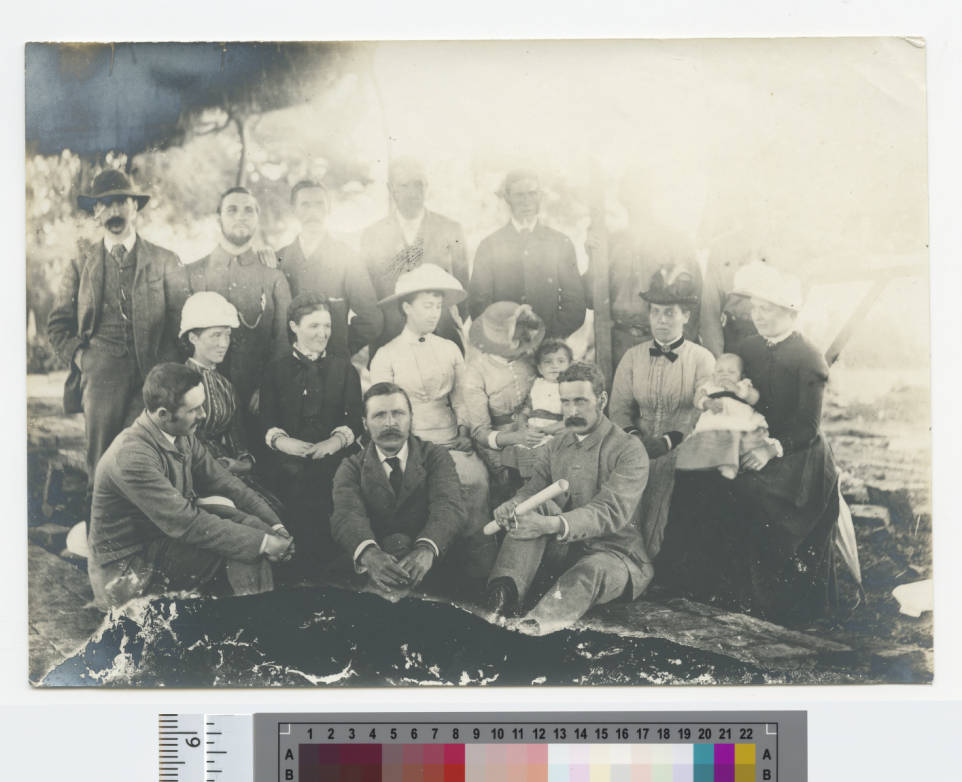 Laying foundations Blantyre church Malawi November 1888
Laying foundations Blantyre church Malawi November 1888
Early Medical Missionaries from Scotland - in Malawi
The picture above shows the group of missionaries at Blantyre Mission in November 1888. The occassion was the laying of the foundation of the St. Michael and All Angels Church. Rev. Scott is in the front row holding the scroll possibly with some of the plans for the church. Dr. Bowie is the one standing on the left with a hat. His sister Harriet Bowie, the wife of Henderson, is also in the picture possibly the one sitting holding a little boy and her face hidden by her hat. She and her child died on the Mission. Alfred Scott may not be in the picture as he only arrived at the mission in 1889. We will talk more about this picture in another blog! (Source of the picture: UCL Libraries.)
It is hard to overstate the influence and sacrifice that Scottish missionaries have given to Malawi. They were some of the most brilliant minds of their time. Greatly influenced by Dr. David Livingstone, they heard God's call, left everything, and thorugh personal sacrifice and faith left a lasting legacy in Malawi. In this blogpost we would like to mention nine medical missionaries who were influential in the medical training and hospital care in Malawi. Beneath the list of books below we give a brief biography for each and then larger images of the books available on Amazon.
See below the (i) list of books and (ii) brief biographies.
(i) Book List

 The Physician and the Slave Trade
The Physician and the Slave Trade: John Kirk, by Daniel Liebowitz.

 Stewart Of Lovedale:
Stewart Of Lovedale: The Life Of James Stewart, by James Wells.

 The Last Slave Market: Dr John Kirk and the Struggle to End the East African Slave Trade, by Alastair Hazell
The Last Slave Market: Dr John Kirk and the Struggle to End the East African Slave Trade, by Alastair Hazell 
 The Martyrs of Blantyre:
The Martyrs of Blantyre: Henderson, Dr. John Bowie & Robert Cleland, by William Robertson.

 Into Africa,
Into Africa, The Epic Adventures Of Stanley And Livingstone, by Martin Dugard.

 The Last Journals of David Livingstone,
The Last Journals of David Livingstone, by Horace Waller.

 Africa in Scotland, Scotland in Africa,
Africa in Scotland, Scotland in Africa, by Afe Adogame.

 A South African Medical Pioneer
A South African Medical Pioneer. The Life of Neil MacVicar.
(ii) Brief Biographies
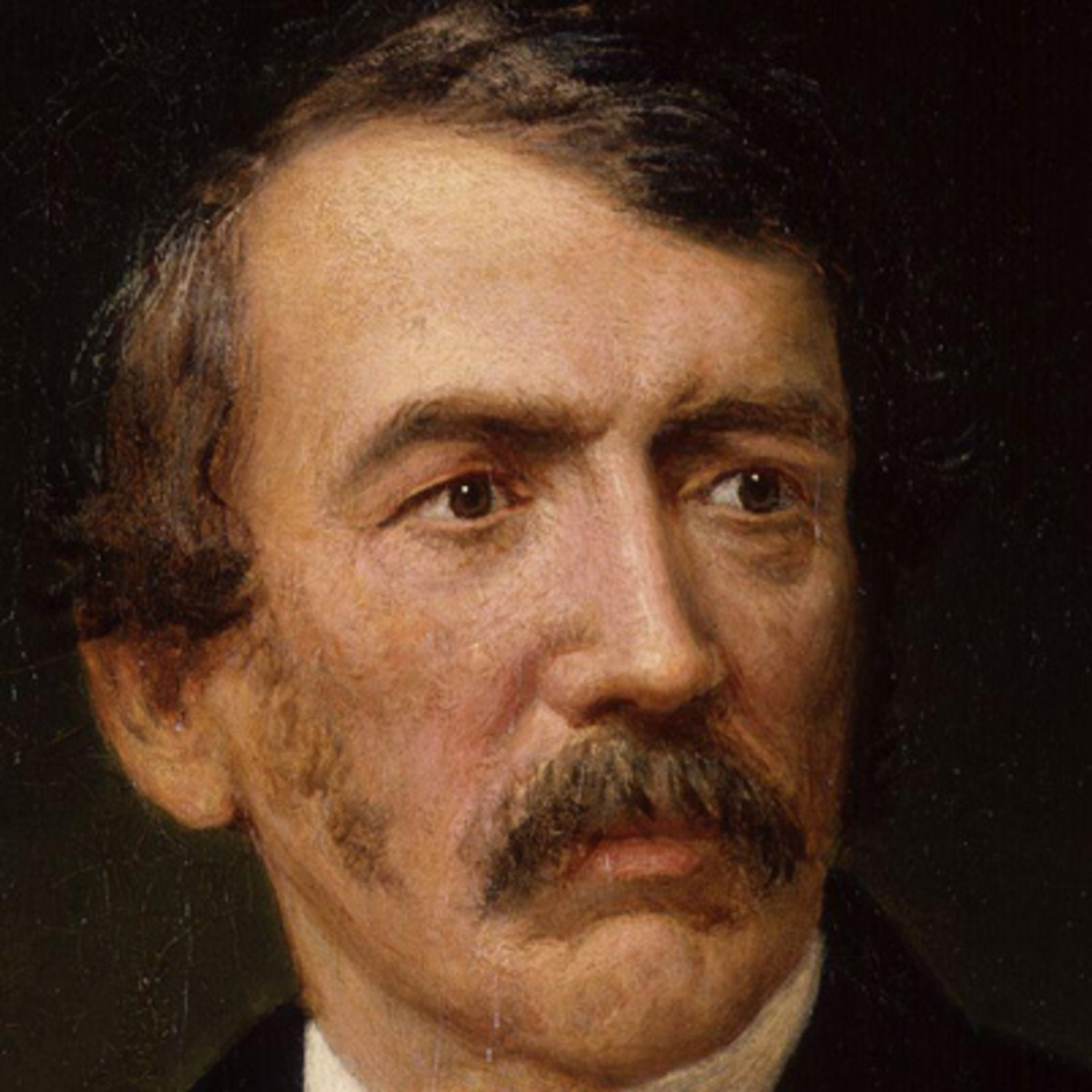 david livingstone wc 9383955 1 4021. Dr. David Livingstone (1813 - 1873)
david livingstone wc 9383955 1 4021. Dr. David Livingstone (1813 - 1873) was the great African Explorer who opened Malawi to commerce and Christianity. He was instrumental in the defeat of the slave trade. Coming from humble beginnings he worked hard to educate himself. He attended divinity lectures at Glasgow University and graduated as a physician in Edinburgh in 1840. Livingstone travelled to Nyasaland and Lake Malawi twice. In 1861 he visited Nkhotakota and withnessed the cruel slave trade. He was horrified at the way slaves were handled at Jumbe's stockade and he described it as "a place of bloodshed and lawlessness". He called on to Christian Missionaries to come and bring legitimate commerce and Christianity as a means of replacing and defeating the slave trade. Some great men and women heeded his call. His notes on African fever and malaria and his dosage of quinnine have saved the lives of many missionaries and other visitors. He himself was no stranger to pain and suffering including the loss of dear friends like Bishop Mackenzie and his own wife, to malaria.
 Andrew Smith2. Andrew Smith (1797 - 1872) was a doctor & zoologist in southern Africa. He was a military surgeon in the Cape Colony and he explored the interior, establishing the South African Museum of Natural History in Cape Town in 1825. In 1828 Smith travelled to Namaqualand to discover more about the lives of the Bushmen there. One result was his publication, in 1831, of a paper on the history and society of the Bushmen. In 1833 Smith led an 18 month expedition into the little known areas of Basutoland, Kuruman, and Magaliesberg. This allowed the establishment of diplomatic relations between Mzilikazi, the southern African king who ruled the Matabele kingdom, and the Cape Colony. Did Dr. Livingstone read any of Dr. Smith's writtings? It is very likely that he did.
Andrew Smith2. Andrew Smith (1797 - 1872) was a doctor & zoologist in southern Africa. He was a military surgeon in the Cape Colony and he explored the interior, establishing the South African Museum of Natural History in Cape Town in 1825. In 1828 Smith travelled to Namaqualand to discover more about the lives of the Bushmen there. One result was his publication, in 1831, of a paper on the history and society of the Bushmen. In 1833 Smith led an 18 month expedition into the little known areas of Basutoland, Kuruman, and Magaliesberg. This allowed the establishment of diplomatic relations between Mzilikazi, the southern African king who ruled the Matabele kingdom, and the Cape Colony. Did Dr. Livingstone read any of Dr. Smith's writtings? It is very likely that he did.
His work and life is described in a book by Kirby, P.R., Sir Andrew Smith, M.D., K.C.B.: His Life, Letters and Works. Cape Town, 1965). This book is currently unavailable on Amazon.
 james stewart
james stewart
3. Rev. Dr. James Stewart (1831 - 1905) was the principal at Lovedale Seminary in the Cape Colony and founder of the Livingstonia Mission. He studied both medicine and theology, a combination that was particularly common among Scottish missionaries. Following Livingstone’s call, Stewart developed a plan to launch a Free Church of Scotland mission in the region of present day Malawi. The Livingstonia Mission was located in what is now the Northern Region of Malawi following it's earlier moves from Cape Maclear and Bandawe.
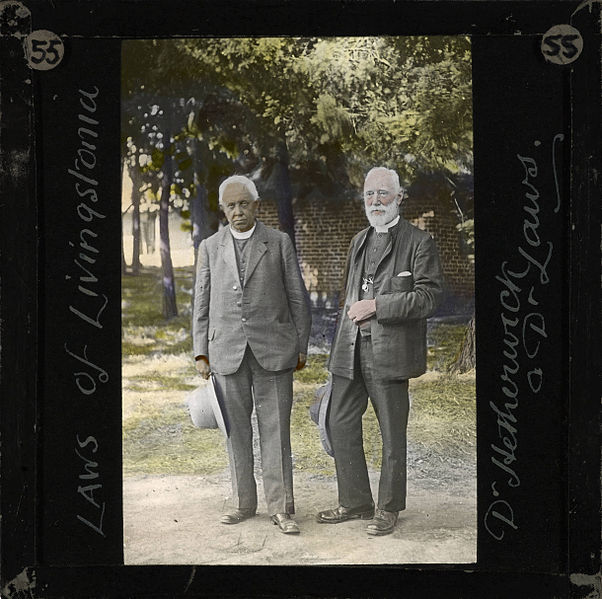 Dr Robert Laws and Dr Alexander Hetherwick Malawi ca. 1810 ca. 1925 imp cswc GB 237 CSWC47 LS5 1 0554. Dr. Robert Laws (1851–1934) pictured here with Rev. Alexander Hetherwisk possibly at Blantyre Mission. Young Robert Laws, a cabinetmaker’s son from Aberdeen, was particularly enthused by stories of Livingstone’s friends, the Makololo, who were his African allies. At one point he regularly prayed, “O God, send me to the Makololo.” Laws also went on to study both medicine and theology. He spend 50 years in Nyasaland as a doctor and missionary, serving both the European and the local people. He was greatly loved and admired by all the people and is famous for leading the Livingstonia Mission for many years.
Dr Robert Laws and Dr Alexander Hetherwick Malawi ca. 1810 ca. 1925 imp cswc GB 237 CSWC47 LS5 1 0554. Dr. Robert Laws (1851–1934) pictured here with Rev. Alexander Hetherwisk possibly at Blantyre Mission. Young Robert Laws, a cabinetmaker’s son from Aberdeen, was particularly enthused by stories of Livingstone’s friends, the Makololo, who were his African allies. At one point he regularly prayed, “O God, send me to the Makololo.” Laws also went on to study both medicine and theology. He spend 50 years in Nyasaland as a doctor and missionary, serving both the European and the local people. He was greatly loved and admired by all the people and is famous for leading the Livingstonia Mission for many years.
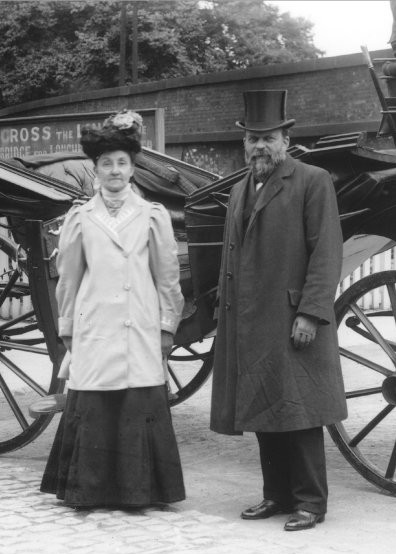 Sir John Lady Kirk5. Dr. John Kirk (1832–1922), pictured with his wife, was also influenced by David Livingstone's life although he never became a mission doctor. He was the medical officer of Livingstone’s Zambesi Expedition of 1858–1864 which explored the Shire and part of Malawi with the view of opening a way for commerce and christianity and defeating the slave trade. He also suported Livingstone's expedition from Zanzibar. Like Stewart, Kirk attended Livingstone’s funeral in 1874. He went on to become the most important British official on the East African coast before he returned to Britain in 1887. He dicovered many useful plants, such as strophanthus kombe, a poisonous climbing plant used as an arrow poison that Kirk ‘discovered’ during the Zambesi expedition. From strophanthus seeds, Thomas Fraser, a medical scientist at Edinburgh University, developed strophanthin, a cardiac drug resembling digitalis.
Sir John Lady Kirk5. Dr. John Kirk (1832–1922), pictured with his wife, was also influenced by David Livingstone's life although he never became a mission doctor. He was the medical officer of Livingstone’s Zambesi Expedition of 1858–1864 which explored the Shire and part of Malawi with the view of opening a way for commerce and christianity and defeating the slave trade. He also suported Livingstone's expedition from Zanzibar. Like Stewart, Kirk attended Livingstone’s funeral in 1874. He went on to become the most important British official on the East African coast before he returned to Britain in 1887. He dicovered many useful plants, such as strophanthus kombe, a poisonous climbing plant used as an arrow poison that Kirk ‘discovered’ during the Zambesi expedition. From strophanthus seeds, Thomas Fraser, a medical scientist at Edinburgh University, developed strophanthin, a cardiac drug resembling digitalis.
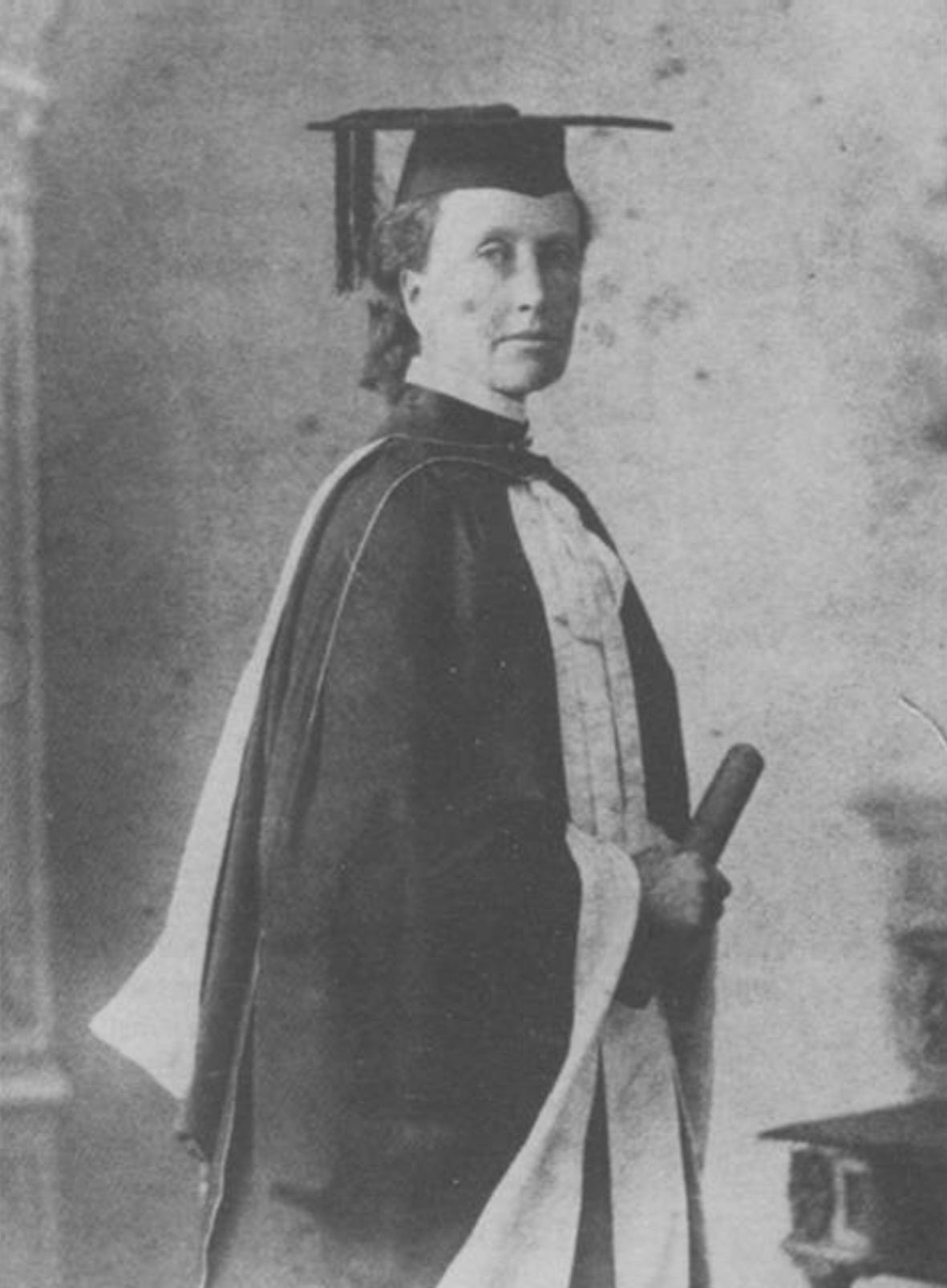 WP Jane Elizabeth Waterston
WP Jane Elizabeth Waterston
6. Dr. Jane Waterston (1843–1932) was from an Inverness middle class background and used her experience as a missionary teacher at Lovedale to acess medical training in Britain. She travelled to Livingstonia in 1879 as a medical doctor and missionary. She was at that time thirty-six years old and had spent eight years teaching at the Lovedale Mission in the Cape Colony. She was one of the first British women to become a doctor. However, she struggled to fit in at Livingstonia, where Dr. Laws was also a doctor. Unlike African patients, who seemed to accept both male and female healers with little difficulty, many missionaries were reluctant to be treated by a woman. Waterston resigned after only six months of service in Livingstonia and settled in South Africa as a doctor.
 macvicar7. Dr. Neil Macvicar (1871–1949) was a son of the manse and a brilliant doctor. He won the gold medal for outstanding medical student of the year at Edinburgh University. Dr Macvicar arrived in Blantyre in 1896 where he formed a close friendship with Dr Scott who was heading the mission. Macvicar founded the first permanent hospital on Blantyre Mission which he ran with a Scottish nurse, Jessie Samuels, the former acting matron of the Glasgow Western Infirmary, whom he later married. He also began the systematic training of African medical assistants, a pioneering scheme for African medical education that was in part inspired by his experiences as a medical student in Edinburgh. In 1899 he left for a furlough and never returned. Instead, he took up a post in Lovedale, which had provided refuge for Waterston twenty years earlier. James Stewart, old now, took Macvicar under his wing, and he was appointed medical officer of the new Victoria Hospital at Lovedale, remaining there for thirty-five years. With Matron Mary Balmer he continued to develop African medical education. The focus was now on female African nurses, who were trained at the Victoria Hospital from 1903 onwards. Cecilia Makiwane, the first fully certified African nurse in South Africa, trained at Lovedale and was registered by the Cape Colony Medical Council in 1908.
macvicar7. Dr. Neil Macvicar (1871–1949) was a son of the manse and a brilliant doctor. He won the gold medal for outstanding medical student of the year at Edinburgh University. Dr Macvicar arrived in Blantyre in 1896 where he formed a close friendship with Dr Scott who was heading the mission. Macvicar founded the first permanent hospital on Blantyre Mission which he ran with a Scottish nurse, Jessie Samuels, the former acting matron of the Glasgow Western Infirmary, whom he later married. He also began the systematic training of African medical assistants, a pioneering scheme for African medical education that was in part inspired by his experiences as a medical student in Edinburgh. In 1899 he left for a furlough and never returned. Instead, he took up a post in Lovedale, which had provided refuge for Waterston twenty years earlier. James Stewart, old now, took Macvicar under his wing, and he was appointed medical officer of the new Victoria Hospital at Lovedale, remaining there for thirty-five years. With Matron Mary Balmer he continued to develop African medical education. The focus was now on female African nurses, who were trained at the Victoria Hospital from 1903 onwards. Cecilia Makiwane, the first fully certified African nurse in South Africa, trained at Lovedale and was registered by the Cape Colony Medical Council in 1908.
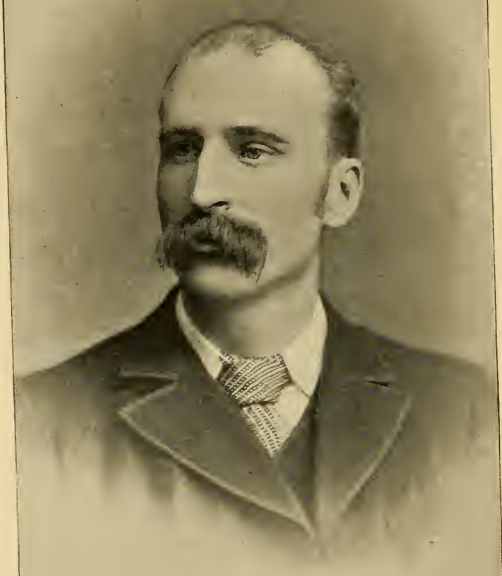 willianaffleckscott8. Rev. William Affleck Scott (1862 - 1895) died of fever at Blantyre Mission. He also was deeply influenced by David Livingstone. He wrote: "I have been reading the life of Livingstone and I am beginning to kindle." Graduating with both an MD and an MA he had a brilliant mind (he won the Eccles bursary while at the Divinity Hall), and was a great athlete and footballer. At Blantyre Mission he continued the medical work and was loved by all who knew him, whether European or Malawian. When he died, a subscription was raised throughout all British Africa for a monument to be raised. A memorial windows was placed in the church of Blantyre and the balance was sent to Mrs Scott. He was to achieve further posthumous distinction in 1896 when Henry Rankine published his biography; a volume entitled “A Hero of the Dark Continent. A Memoir of Rev. William Affleck Scott.”
willianaffleckscott8. Rev. William Affleck Scott (1862 - 1895) died of fever at Blantyre Mission. He also was deeply influenced by David Livingstone. He wrote: "I have been reading the life of Livingstone and I am beginning to kindle." Graduating with both an MD and an MA he had a brilliant mind (he won the Eccles bursary while at the Divinity Hall), and was a great athlete and footballer. At Blantyre Mission he continued the medical work and was loved by all who knew him, whether European or Malawian. When he died, a subscription was raised throughout all British Africa for a monument to be raised. A memorial windows was placed in the church of Blantyre and the balance was sent to Mrs Scott. He was to achieve further posthumous distinction in 1896 when Henry Rankine published his biography; a volume entitled “A Hero of the Dark Continent. A Memoir of Rev. William Affleck Scott.”
9. Dr. Bowie (1858 - 1891) was also born in Edinburgh where he studied medicine. He has three sisters, two of whom also died at Blantyre Mission. Dr. Bowie was one of the best medical students of his time, earning several medals and prizes: a gold medal for Physiology, another for Natural History and a third for Practice of Medicine. After finishing his studies at the University of Edinburgh, he trained in Vienna. He spoke fluent German and Greek. Before going to Blantyre as a missionary, he shared a successful medical practice in London with his brother in law. He was newly married and lived in a nice location in London. Arriving in Blantyre in 1887 he immediately set to work to open a hospital, "this is but the first step towards an African Bartholomew's Hospital, and in Africa before all places one has to 'hasten slowly'", he writes. However in 1891 influenza hit Blantyre Mission and Dr. Bowie attended many natives and mission staff. He died, it is thought, of diphtheria soon after he tried to save his infant nephew and the infants mother, Mrs. Henderson. Mrs Henderson was Dr. Bowie's sister.
Sources for the images are Wikepedia and the University of Southern California Libraries.
